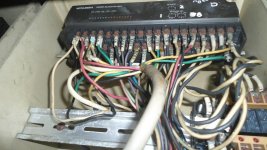To give a better view of the situation, I am posting a picture. This is just 1 of the 4 RTU found nearby the plating machines. All 4 are exposed to the contaminated air (chemical fumes), although they are contained in a chemical resistant box, the box has no cover. This RTU connects to a PLC, which is 10-15m away.
I would like to propose replacement of the panel box to a NEMA type 7 enclosure & contact cleaning. Will that be enough?

I would like to propose replacement of the panel box to a NEMA type 7 enclosure & contact cleaning. Will that be enough?




